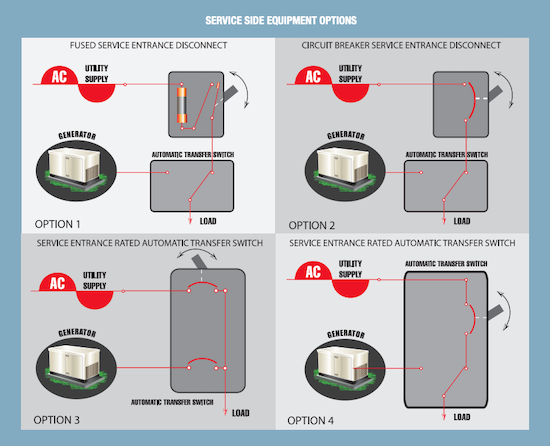According to the National Electrical Code, all buildings must have a means to disconnect electrical power service from the utility at the site where it enters the building. For buildings that have a standby power system, this can take the form of a service entrance rated transfer switch. In this post, you’ll learn what a service entrance rated transfer switch is, where it is commonly used, how it can be used, and different ways it can be configured.
What is a Service Entrance-Rated Transfer Switch?
A service entrance rated transfer switch is a type of generator transfer switch. It’s the first piece of equipment between the electrical utility and your home or business building. These transfer switches allow you to manually disconnect your building from utility power and to safely switch to another power source if utility power becomes unavailable. These switches generally involve some method of over-current protection that protects the building’s electrical service via a fuse or a circuit breaker. Service entrance rated transfer switches should be code compliant and have UL-891 and UL-1008 labels.
